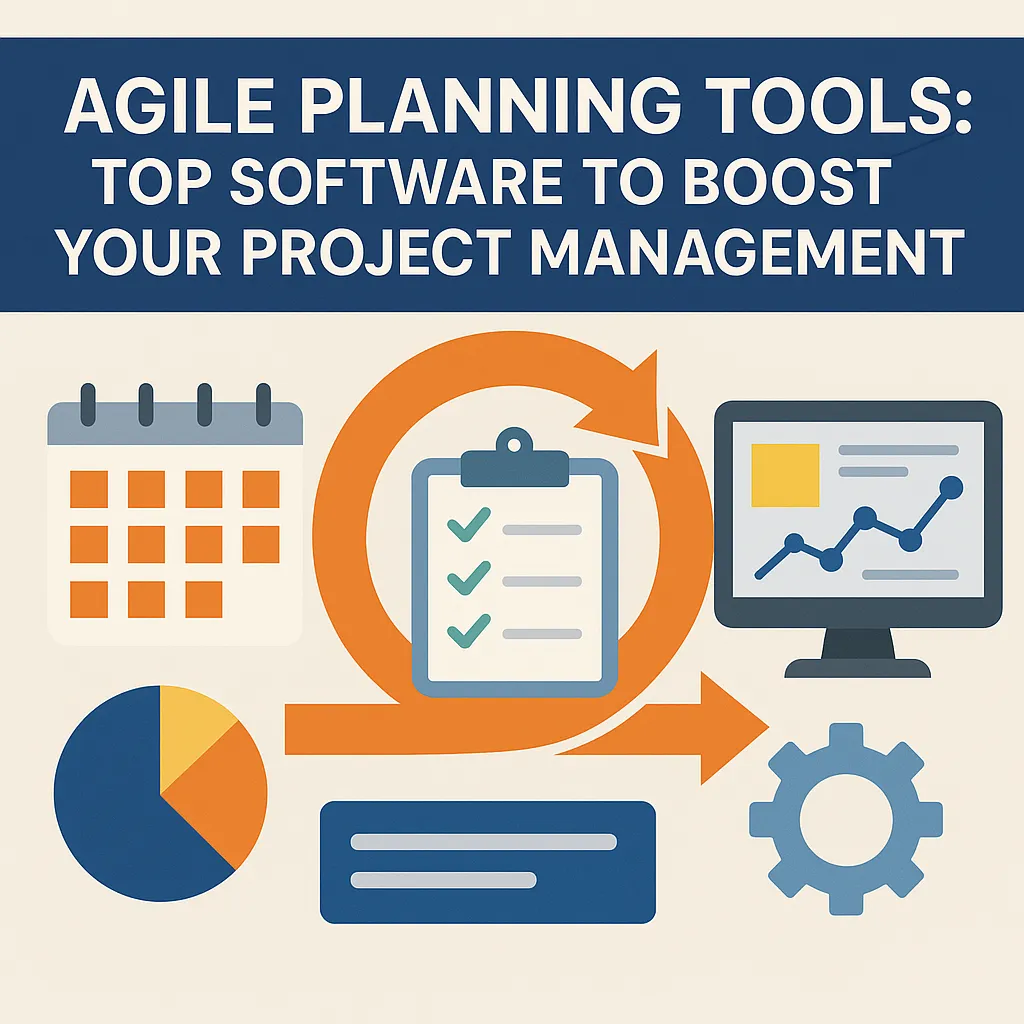Introduction to Agile Planning
Agile planning is a dynamic approach to project management that emphasizes flexibility, collaboration, and customer satisfaction. It is rooted in the principles of the Agile Manifesto, which advocates for adaptive planning, evolutionary development, early delivery, and continual improvement. Here’s a closer look at what agile planning entails and why it is significant in the realm of project management.
Definition and Principles of Agile Planning
Agile planning is characterized by its iterative process, where projects are broken down into smaller, manageable units called iterations or sprints. This allows teams to focus on delivering functional components of a project incrementally. The core principles of agile planning include:
- Customer Collaboration: Engaging stakeholders and customers throughout the project lifecycle to ensure that the final product meets their needs and expectations.
- Responding to Change: Embracing changes in requirements, even late in the development process, to enhance the product’s value.
- Continuous Improvement: Regularly reflecting on the team’s performance and processes to identify areas for enhancement.
These principles foster a culture of adaptability and responsiveness, which is essential in today’s fast-paced business environment.
Importance of Flexibility and Adaptability
In traditional project management methodologies, rigid planning often leads to challenges when unexpected changes arise. Agile planning, on the other hand, prioritizes flexibility, allowing teams to pivot quickly in response to new information or shifting priorities. This adaptability is crucial for several reasons:
- Enhanced Responsiveness: Agile teams can quickly adjust their plans based on feedback or changes in market conditions, ensuring that the project remains relevant and aligned with business goals.
- Improved Risk Management: By breaking projects into smaller increments, teams can identify and address potential risks early in the process, reducing the likelihood of major setbacks.
- Increased Team Morale: Agile methodologies promote a collaborative environment where team members feel empowered to contribute ideas and solutions, leading to higher job satisfaction and productivity.
Agile Methodologies: Scrum and Kanban
Agile planning encompasses various methodologies, with Scrum and Kanban being two of the most widely adopted frameworks:
- Scrum: This framework organizes work into fixed-length iterations called sprints, typically lasting two to four weeks. Scrum emphasizes roles such as the Product Owner, Scrum Master, and Development Team, each with specific responsibilities to ensure effective collaboration and delivery.
- Kanban: Unlike Scrum, Kanban focuses on visualizing the workflow and managing work in progress. It uses a Kanban board to represent tasks and their statuses, allowing teams to optimize their processes and improve efficiency. Kanban promotes continuous delivery and encourages teams to limit the amount of work in progress to enhance focus and productivity.
The Role of Agile Planning Tools
Particularly within IT and software development, agile planning tools play a crucial role in enhancing efficiency and effectiveness. These tools are designed to support agile methodologies, which prioritize flexibility, collaboration, and customer satisfaction. Here’s a closer look at how agile planning tools facilitate better project management.
Benefits of Using Agile Planning Tools
- Collaboration: Agile planning tools foster a collaborative environment where team members can easily communicate and share ideas. Features such as shared boards, comments, and notifications ensure that everyone is on the same page, which is essential for agile teams that often work in cross-functional groups. This collaboration leads to improved team dynamics and faster problem-solving.
- Transparency: One of the core principles of agile methodologies is transparency. Agile planning tools provide visibility into project progress, allowing all stakeholders to see the status of tasks and the overall project. This transparency helps in building trust among team members and stakeholders, as everyone can track progress and understand challenges in real-time.
- Real-Time Updates: Agile planning tools offer real-time updates, which are vital for adapting to changes quickly. As project requirements evolve, these tools allow teams to adjust their plans and priorities on the fly. This responsiveness is a key advantage of agile practices, enabling teams to deliver value continuously and efficiently.
Support for Agile Methodologies and Practices
Agile planning tools are specifically designed to align with agile methodologies such as Scrum, Kanban, and Lean. They provide features that support:
- Sprint Planning: Tools often include functionalities for planning sprints, allowing teams to define goals, allocate tasks, and estimate workloads effectively. This structured approach helps teams focus on delivering incremental value.
- Backlog Management: Agile tools facilitate the management of product backlogs, enabling teams to prioritize tasks based on customer feedback and business value. This ensures that the most important features are developed first, aligning with agile principles of delivering customer-centric solutions.
- Burndown Charts and Metrics: Many agile planning tools come equipped with analytics features, such as burndown charts, which help teams track their progress against planned work. These metrics are essential for assessing team performance and making informed decisions about future sprints.
Common Challenges Faced Without Agile Planning Tools
Without agile planning tools, teams often encounter several challenges that can hinder project success:
- Lack of Communication: In the absence of a centralized tool, communication can become fragmented, leading to misunderstandings and misalignment among team members. This can slow down progress and create confusion about project goals.
- Difficulty in Tracking Progress: Without real-time updates and visibility, it becomes challenging to track project progress effectively. Teams may struggle to identify bottlenecks or areas that require attention, resulting in delays and missed deadlines.
- Inflexibility: Traditional project management approaches often lack the flexibility needed to adapt to changing requirements. Without agile planning tools, teams may find it difficult to pivot quickly in response to new information or customer feedback, which is a fundamental aspect of agile methodologies.
Criteria for Selecting Agile Planning Tools
When it comes to selecting the right agile planning tools for project management, project managers and IT professionals should consider several key criteria to ensure they choose software that enhances productivity and collaboration. Here are the essential factors to keep in mind:
1. Essential Features
- Task Management: Look for tools that offer robust task management capabilities, allowing teams to create, assign, and prioritize tasks easily. Features such as Kanban boards, task lists, and backlog management are crucial for visualizing work and tracking progress.
- Time Tracking: Effective agile planning tools should include time tracking functionalities. This allows teams to monitor how much time is spent on tasks, helping to improve estimates and resource allocation. Time tracking can also assist in identifying bottlenecks in the workflow.
- Reporting: Comprehensive reporting features are vital for analyzing project performance. Tools should provide insights through dashboards and customizable reports that track key metrics such as velocity, burndown charts, and team performance. This data is essential for making informed decisions and adjustments throughout the project lifecycle.
2. Integration Capabilities
- Compatibility with Other Tools: Agile planning tools should seamlessly integrate with other project management and collaboration tools that your team already uses. This includes software for communication (like Slack or Microsoft Teams), version control (such as Git), and documentation (like Confluence). Effective integration minimizes disruptions and enhances workflow efficiency by allowing data to flow freely between platforms.
- API Access: Consider tools that offer API access for custom integrations. This flexibility can be crucial for organizations with specific needs or existing systems that require tailored solutions.
3. User Experience and Interface Design
- Intuitive Interface: The user interface should be intuitive and easy to navigate. A well-designed interface reduces the learning curve for new users and enhances overall team adoption. Look for tools that prioritize user experience, offering clear navigation, helpful tooltips, and a clean layout.
- Customization Options: The ability to customize the interface and workflows can significantly enhance user satisfaction. Tools that allow users to tailor dashboards, notifications, and task views to their preferences can lead to increased engagement and productivity.
- Mobile Accessibility: In today’s fast-paced work environment, having mobile access to agile planning tools is essential. Ensure that the tool offers a mobile-friendly version or app, allowing team members to stay connected and manage tasks on the go.
By focusing on these criteria, project managers and IT professionals can select agile planning tools that not only meet their project needs but also foster collaboration and efficiency within their teams. The right tool can make a significant difference in the success of agile project management, enabling teams to adapt quickly and deliver high-quality results.
Top Agile Planning Tools for Project Management
Agile planning has emerged as a vital approach that allows teams to adapt quickly to changes and deliver value efficiently. To facilitate this process, various tools have been developed to support agile methodologies. Below is a comprehensive review of some of the most effective agile planning tools available, highlighting their key features and benefits for project managers and IT professionals.
1. Jira
Jira is a widely recognized tool in the agile project management landscape, particularly favored by software development teams. Its robust features include:
- Scrum Boards: These allow teams to visualize their work in sprints, making it easier to manage tasks and track progress.
- Kanban Boards: Ideal for teams practicing Kanban, these boards help in visualizing workflow and limiting work in progress.
- Reporting Tools: Jira offers extensive reporting capabilities, enabling teams to analyze performance and identify areas for improvement.
- Customizable Workflows: Users can tailor workflows to fit their specific processes, enhancing flexibility and efficiency.
2. Trello
Trello is known for its simplicity and visual approach to task management. Key features include:
- Visual Task Management: Utilizing boards and cards, Trello provides an intuitive interface for organizing tasks and projects.
- Easy Collaboration: Team members can easily collaborate by commenting on cards, attaching files, and assigning tasks.
- Integrations: Trello supports numerous integrations with other tools, enhancing its functionality and allowing for a more seamless workflow.
3. Asana
Asana is a versatile project management tool that caters to various project management styles. Its features include:
- Task Assignments: Users can assign tasks to team members, ensuring accountability and clarity in responsibilities.
- Deadlines: Asana allows teams to set deadlines for tasks, helping to keep projects on track.
- Project Timelines: The timeline feature provides a visual representation of project schedules, making it easier to plan and adjust as needed.
- Tracking: Asana offers tracking capabilities to monitor progress and ensure that projects are moving forward as planned.
4. Monday.com
Monday.com is a highly customizable project management platform that supports agile planning through its unique features:
- Customizable Workflows: Teams can create workflows that suit their specific needs, allowing for greater adaptability.
- Visual Project Tracking: The platform provides visual tools to track project progress, making it easy to see where things stand at a glance.
- Collaboration Features: Monday.com enhances team collaboration with features that allow for communication and file sharing within the platform.
5. ClickUp
ClickUp is an all-in-one project management tool that combines various functionalities to support agile planning. Its features include:
- All-in-One Project Management: ClickUp consolidates multiple project management needs into one platform, reducing the need for multiple tools.
- Task Tracking: Users can track tasks effectively, ensuring that nothing falls through the cracks.
- Goal Tracking: The tool allows teams to set and monitor goals, aligning daily tasks with broader project objectives.
- Integrations: ClickUp supports a wide range of integrations, enhancing its versatility and usability across different teams and projects.
Comparison of Agile Planning Tools
Agile planning tools play a crucial role in enhancing team collaboration, improving project visibility, and ensuring that projects are delivered on time and within budget. Below is a comparison of some of the most effective agile planning tools available, highlighting their key features, pricing, user ratings, and insights from real-world use cases.
Comparison Table of Agile Planning Tools
| Tool Name | Key Features | Pricing | User Ratings (out of 5) |
| Jira | Issue tracking, customizable workflows, reporting | Starts at $10/month for 10 users | 4.5 |
| Trello | Kanban boards, integrations, automation | Free; Business Class at $12.50/user/month | 4.3 |
| Asana | Task assignments, timelines, project tracking | Free; Premium at $10.99/user/month | 4.4 |
| Monday.com | Visual project management, automation, templates | Starts at $8/user/month | 4.6 |
| ClickUp | All-in-one platform, customizable views, goals | Free; Unlimited at $5/user/month | 4.7 |
Pros and Cons of Each Tool
Jira
- Pros: Highly customizable, robust reporting features, excellent for software development teams.
- Cons: Can be complex for new users, may require training to utilize fully.
Trello
- Pros: User-friendly interface, great for visual project management, flexible with integrations.
- Cons: Limited features in the free version, may not scale well for larger teams.
Asana
- Pros: Intuitive design, strong task management capabilities, good for cross-functional teams.
- Cons: Some users find it overwhelming with too many features, pricing can add up for larger teams.
Monday.com
- Pros: Highly visual and customizable, great for team collaboration, offers a variety of templates.
- Cons: Can be pricey for larger teams, some users report a learning curve.
ClickUp
- Pros: Comprehensive features in a single platform, highly customizable, good for various project types.
- Cons: Interface can be cluttered, some features may be underutilized by teams.
By evaluating these tools based on their features, pricing, and user experiences, project managers and IT professionals can make informed decisions that align with their project management needs and team dynamics.
Conclusion: Choosing the Right Agile Planning Tool
Selecting the right agile planning tool is crucial for ensuring that teams can effectively collaborate, adapt to changes, and meet project goals. Here are some key considerations to keep in mind when making your choice:
- Align Tool Choice with Team Needs and Project Goals: It is essential to evaluate the specific requirements of your team and the objectives of your project. Different tools offer various features, such as task management, collaboration capabilities, and reporting functionalities. By aligning the tool with your team’s workflow and the project’s demands, you can enhance productivity and streamline processes.
- Encourage Exploration Through Free Trials or Demos: Many agile planning tools offer free trials or demo versions, allowing teams to test the software before committing to a purchase. This hands-on experience can provide valuable insights into how well a tool fits your team’s dynamics and project requirements. Encourage your team to explore multiple options to find the best fit.
- Resources for Further Learning: To deepen your understanding of agile planning and project management, consider exploring additional resources. Books, online courses, and webinars can provide valuable insights into agile methodologies, best practices, and the latest trends in project management. Websites like the Agile Alliance and Project Management Institute (PMI) offer a wealth of information that can help you stay informed and enhance your skills.
By carefully considering these factors, project managers and IT professionals can make informed decisions when selecting agile planning tools, ultimately leading to more successful project outcomes.
Find out more about Shaun Stoltz https://www.shaunstoltz.com/about/.
This post was written by an AI and reviewed/edited by a human.



